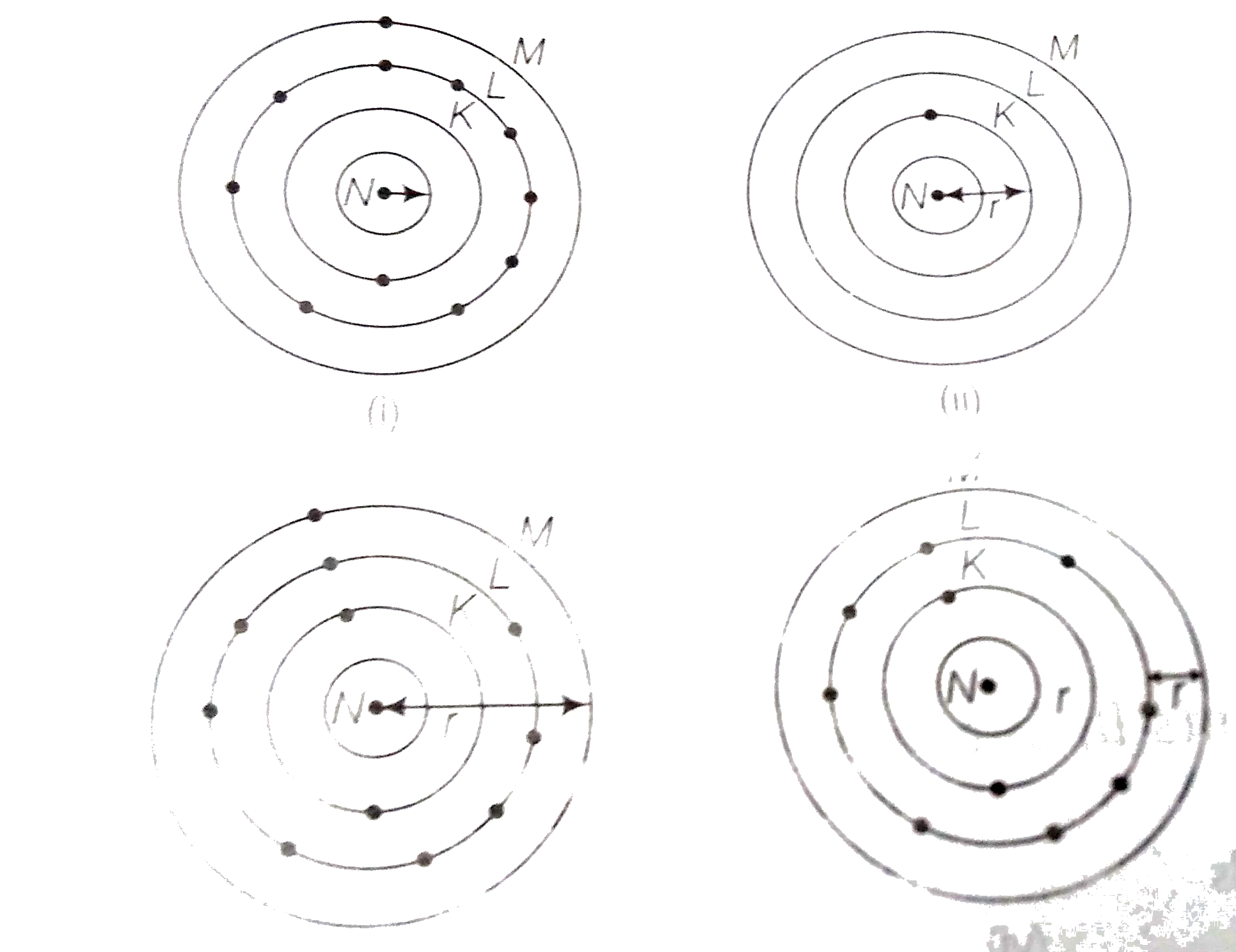Which is/are the correct order/s of atomic radius?
Mn>Fe>CO
Mn≈Fe≈Co
Sc>Ti>V
Zn<Cu<Ni
The correct Answer is:B, C, D
To determine the correct order of atomic radius among the D block elements, we need to analyze the trends in atomic size across the first series of D block elements (3D series) which includes the elements from scandium (Sc) to zinc (Zn).
1. Identify the Elements:
The first series of D block elements includes:
- Scandium (Sc, Z=21)
- Titanium (Ti, Z=22)
- Vanadium (V, Z=23)
- Chromium (Cr, Z=24)
- Manganese (Mn, Z=25)
- Iron (Fe, Z=26)
- Cobalt (Co, Z=27)
- Nickel (Ni, Z=28)
- Copper (Cu, Z=29)
- Zinc (Zn, Z=30)
2. Understand the Trend:
- From Scandium to Chromium, the atomic radius decreases. This is due to the increase in effective nuclear charge (Z_eff) as we move across the period, which pulls the electrons closer to the nucleus, resulting in a smaller atomic radius.
- From Manganese to Cobalt, the atomic radius remains relatively constant. This is because the d-orbitals start to fill, and the repulsion between the electrons in the d-orbitals counteracts the increase in nuclear charge, leading to a nullification effect on atomic size.
- From Nickel to Zinc, the atomic radius increases slightly due to increased electron-electron repulsion as the d-orbitals become fully filled.
3. Establish the Orders:
- The expected order of atomic radius from Sc to Zn can be summarized as follows:
- Sc > Ti > V > Cr > Mn ≈ Fe ≈ Co > Ni < Cu < Zn
- Here, Mn, Fe, and Co have similar atomic radii, while Ni, Cu, and Zn show an increase in size due to electronic repulsion.
4. Evaluate the Options:
- Based on the trends observed:
- The order of atomic radius from Sc to Cr is correct (decreasing).
- The atomic radius of Mn, Fe, and Co is approximately equal.
- The atomic radius from Ni to Zn shows an increase.
5. Conclusion:
- The correct orders of atomic radius are:
- Sc > Ti > V > Cr (decreasing)
- Mn ≈ Fe ≈ Co (approximately equal)
- Ni < Cu < Zn (increasing)
Final Answer:
The correct orders of atomic radius are only option B and option C based on the analysis above.
The first series of D block elements includes:
- Scandium (Sc, Z=21)
- Titanium (Ti, Z=22)
- Vanadium (V, Z=23)
- Chromium (Cr, Z=24)
- Manganese (Mn, Z=25)
- Iron (Fe, Z=26)
- Cobalt (Co, Z=27)
- Nickel (Ni, Z=28)
- Copper (Cu, Z=29)
- Zinc (Zn, Z=30)
- From Scandium to Chromium, the atomic radius decreases. This is due to the increase in effective nuclear charge (Z_eff) as we move across the period, which pulls the electrons closer to the nucleus, resulting in a smaller atomic radius.
- From Manganese to Cobalt, the atomic radius remains relatively constant. This is because the d-orbitals start to fill, and the repulsion between the electrons in the d-orbitals counteracts the increase in nuclear charge, leading to a nullification effect on atomic size.
- From Nickel to Zinc, the atomic radius increases slightly due to increased electron-electron repulsion as the d-orbitals become fully filled.
- The expected order of atomic radius from Sc to Zn can be summarized as follows:
- Sc > Ti > V > Cr > Mn ≈ Fe ≈ Co > Ni < Cu < Zn
- Here, Mn, Fe, and Co have similar atomic radii, while Ni, Cu, and Zn show an increase in size due to electronic repulsion.
- Based on the trends observed:
- The order of atomic radius from Sc to Cr is correct (decreasing).
- The atomic radius of Mn, Fe, and Co is approximately equal.
- The atomic radius from Ni to Zn shows an increase.
- The correct orders of atomic radius are:
- Sc > Ti > V > Cr (decreasing)
- Mn ≈ Fe ≈ Co (approximately equal)
- Ni < Cu < Zn (increasing)
The correct orders of atomic radius are only option B and option C based on the analysis above.
Topper's Solved these Questions
- PERIODIC TABLE & PERIODICITYBOOK - RESONANCE ENGLISHCHAPTER - PERIODIC TABLE & PERIODICITYEXERCISE - Exercise-2
1 Videos
- PERIODIC TABLE & PERIODICITYBOOK - RESONANCE ENGLISHCHAPTER - PERIODIC TABLE & PERIODICITYEXERCISE - Exercise-3
1 Videos
- PERIODIC TABLE & PERIODICITYBOOK - RESONANCE ENGLISHCHAPTER - PERIODIC TABLE & PERIODICITYEXERCISE - Exercise-1
1 Videos
- P-BLOCK ELEMENTS (HALOGEN & NOBLE GASES)BOOK - RESONANCE ENGLISHCHAPTER - P-BLOCK ELEMENTS (HALOGEN & NOBLE GASES)EXERCISE - APSP PART-3
22 Videos
- QUALITATIVE ANALYSISBOOK - RESONANCE ENGLISHCHAPTER - QUALITATIVE ANALYSISEXERCISE - INORGANIC CHMISTRY(Qualitative analysis)
35 Videos
Similar Questions
Knowledge Check
The correct order of size of atoms is
AN>O>FBF>N>OCN>F>ODF>O>N
The correct order of atomic sizes is
View SolutionThe correct order of atomic/ionic radiii is:
View SolutionThe correct order of atomic/ionic radiii is:
View SolutionThe correct order of atomic or ionic size
View SolutionWhich is the correct order of ionic sizes ?
(Atomic no . : Ce = 58 , Sn = 50 , Yb = 70 and Lu)
View SolutionWhich one of the following depict the correct representation of atomic radius (r) of an atom ?

View SolutionWhich of the following is the correct order of radius ?
View Solution
